The Real Gold: Unearthing Natural Treasures
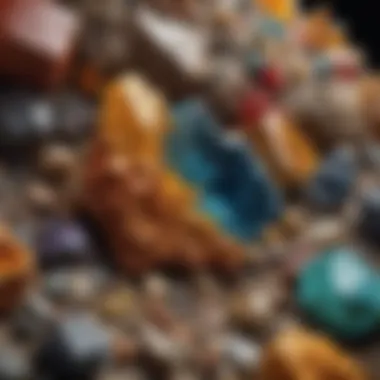

Intro
The concept of real gold extends far beyond the familiar shimmering metal used for currency and jewelry. It finds its essence in the natural treasures present beneath our feet, embodyed in minerals, fossils, and geological formations. These treasures hold immense cultural, scientific, and economic significance in today's world.
This article aims to provide a comprehensive narrative that explores this multifaceted significance. Not merely collectors’ items, these natural wonders capture stories of our planet and its history, underscoring humanity's profound connection with the natural environment. From the discovery phase to collection practices, learners and collectors alike will gain insights into their importance.
Through rigorous exploration, we will identify the interplay between various natural treasures and society. We will also delve into their contributions to science, art, and economy, revealing the intricate tapestry that weaves together collectors and nature beyond superficial appreciation.
History and Origins
Overview of Collectibles, Rocks, and Fossils
Throughout history, people have developed a fascination with collectibles such as rocks and fossils. This interest is deeply rooted in the human instinct to explore, discover, and understand our surroundings. Natural treasures are often seen as remnants of Earth’s history, offering unique insights into our planetary evolution.
Fossils, particularly, represent ancient life forms and environments, allowing scientists to reconstruct prehistoric ecosystems. Many early civilizations viewed these treasures as omens or symbols of power and prosperity. By uncovering and understanding these items, collectors participate in a timeless dialogue between the past and present.
Historical Significance and Cultural Impact
The historical significance of natural treasures is profound. Societies have been shaped by their access to minerals and fossilized remains. For instance, Native American cultures often incorporated stones into their rituals, symbolizing their connection to the earth. Similarly, ancient Egyptian civilization prized gemstones for their spiritual connotations and aesthetic qualities.
In modern times, the appeal of collecting these treasures has continued to thrive. Museums, universities, and independent collectors alike have invested resources in discovering new specimens. This cultural interest fosters a greater awareness of conservation and geology, making it crucial for current and future generations.
Identification and Classification
Guide to Identifying Rocks and Fossils
Identifying various rocks and fossils can be an enriching experience for collectors. Each piece carries its own unique story. A basic guide begins with understanding their characteristics. For example:
- Igneous Rocks: Formed from cooled magma or lava, characterized by their crystalline structure. Common examples include granite and basalt.
- Sedimentary Rocks: Created from accumulated particles over time, often layered. They may contain fossils and are softer than igneous types.
- Metamorphic Rocks: Result from transformation due to heat and pressure, with distinct bands or foliation, such as marble and schist.
Fossils can be more distinct. Collectors often look for impressions or actual remnants of organisms in sedimentary rocks. Noteworthy findings include:
- Trace Fossils: Markings or imprints left by animals.
- Body Fossils: Actual remnants of the organism itself, including bones or shells.
Common Types and Variations
Collectors encounter a variety of rocks and fossils during their pursuits. Understanding the common types and their variations adds depth to any collection. Generally, the rocks can be classified into:
- Granite - Igneous with visible crystals, often used in construction.
- Limestone - A sedimentary rock, rich in fossils, primarily formed from marine organisms.
- Shale - A fine-grained sedimentary rock that can contain layers of fossils.
For fossils, some popular types include:
- Ammonites: Coiled shells from ancient sea creatures, recognized for their distinctive patterns.
- Dinosaur Bones: Large and often fragmented remnants that provide critical insights into prehistoric life.
The act of identifying and collecting these treasures not only satisfies curiosity but also shapes understanding of science and history.
"Natural treasures serve as a bridge between the past and present, illuminating our understanding of Earth’s journey."
By examining these various aspects, we aim to underscore the significance of these natural wonders in contemporary discourse.
Understanding Real Gold
In the exploration of the concept of real gold, it is essential to understand its significance beyond mere value. Gold has long been a symbol of wealth and power, yet its implications stretch into many realms including culture, science, and economics. This exploration provides a holistic view of what real gold embodies in our world, and it invites collectors to appreciate the stories behind their natural treasures. By defining and contextualizing what constitutes real gold, we can better appreciate the broader implications of mineral collecting.
Defining 'Real Gold'
When considering the term "real gold," one must first ponder what this means outside the confines of financial worth. Real gold may refer to the actual metal itself, but it can also relate to the true essence of value derived from natural treasures. These treasures are not limited to precious metals but extend to encompass rare minerals, fossils, and geological formations that symbolize the Earth's history and diversity.
A few key points about defining real gold include:
- Material Value: Traditional gold is prized for its rarity and as a hedge against inflation.
- Cultural Significance: Many cultures view gold as a representation of status or spiritual beliefs.
- Scientific Importance: Certain minerals provide insight into geological processes or evolutionary history.
In this sense, understanding real gold necessitates a comprehension of both tangible and intangible factors. Significant, ‘real’ treasure encompasses the amalgamation of worth, heritage, and ecological narratives.
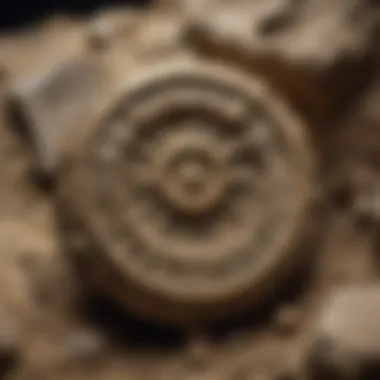
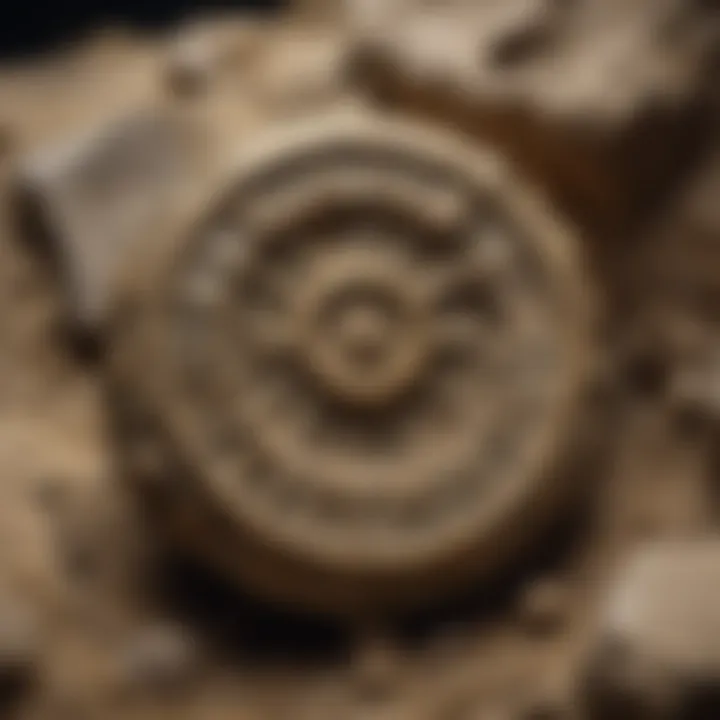
Historical Context of Gold
Gold has a privileged place in human civilization, steeped in history. This precious metal has been revered for thousands of years, with its story intertwining with human progress. In antiquity, cultures such as the Egyptians, who adorned their pharaohs with gold, showcased its symbolic power. The lust for gold played a pivotal role during the exploration phase of many nations, often leading to colonization and expansion.
Important historical elements include:
- Economic Catalyst: Gold has consistently acted as a medium of exchange, influencing economies.
- Artifact Discovery: Many archaeological finds, such as the elaborate burial sites in the Americas or the golden masks of Egypt, demonstrate gold's deep history in human culture.
- Shift in Value Perception: Over time, the understand of gold transitioned from mere adornment to a global standard of worth, impacting trade and economics.
In summary, gold's historical narrative is rich and complex. It serves not just as a commodity but as a mirror reflecting human ambition, culture, and interaction with nature. This understanding sets the stage for examining the intrinsic value of various natural treasures.
The Intrinsic Value of Mineral Collecting
In the realm of natural treasures, the intrinsic value of mineral collecting stands out as a significant theme. It goes beyond mere aesthetics and touches upon essential aspects like education, preservation, and connection with nature. Collecting minerals offers both enthusiasm and knowledge, making it an enriching pursuit for individuals. By exploring why minerals matter and their broader implications, this section seeks to clarify their importance in the landscape of natural treasures.
Rare Minerals and Their Significance
Rare minerals, by their very nature, draw interest from collectors. Their scarcity establishes a sort of prestige in mineral collecting. These minerals often hold unique geological formations, exclusive colors, or even remarkable luminescence. For many collectors, the hunt for rare specimens becomes a multifaceted journey, involving travel to remote places and engaging with local geology.
The significance of rare minerals also expands into scientific research. For instance, some rare minerals are indicators of specific geological events. Their study can unlock Earth's history, providing insights into the conditions that prevailed millions of years ago. The acquisition of rare specimens can, therefore, serve as a bridge between personal enjoyment and academic contribution.
Economics of Mineral Collecting
The economics of mineral collecting is a growing aspect that cannot be overlooked. As demand intensifies, the prices for certain specimens can skyrocket. This market dynamic attracts not only passionate hobbyists but also investors eyeing profitability. Understanding the market trends, accessibility, and valuation of minerals is essential for collectors.
Furthermore, the economic value varies across regions. Some localities may establish mineral shows and trade events, boosting local economies through tourism and commerce. Collecting minerals, therefore, plays a dual role: it acts as a personal investment and contributes to broader economic contexts.
Cultural Impact of Mineral Collections
Mineral collections often serve as cultural artifacts themselves. They tell stories about human interaction with nature across different eras. Collectors may showcase their collections not just as personal endeavors but as educational resources that promote awareness of geology and environmental consciousness.
Cultural institutions, such as museums, frequently rely on private collections to enhance their exhibitions. This collaboration highlights the importance of collector communities in preserving and promoting knowledge about mineralogy. By integrating rare specimens into educational narratives, collectors contribute to the broader cultural dialogue surrounding natural treasures.
"Mineral collecting is not merely an acquisition of objects; it represents a journey of discovery that connects us deeply with the Earth."
In summary, the intrinsic value of mineral collecting touches upon various elements, including rarity, economics, and cultural impact. Each aspect plays a crucial role in shaping our understanding of the natural world. By diving deeper into mineral collections, we uncover not just their physical beauty, but also their relevance in our societal and personal frameworks.
In the following sections, we will further explore other notable natural treasures and their significance.
The Role of Fossils in Understanding Earth's History
Fossils are essential tools for deciphering the complexities of Earth's past. They capture moments of biological history in a tangible form, allowing scientists and enthusiasts alike to explore ancient ecosystems. When we delve into the study of fossils, we encounter invaluable insights into the evolving life forms that once inhabited our planet. This exploration not only enriches our understanding of geology and paleontology but also enhances our appreciation for the natural world today.
Types of Fossils and Their Importance
Fossils come in various forms, each offering unique insights. The most common types include:
- Body Fossils: These include bones, teeth, shells, and any physical remains of organisms. They provide direct evidence of what ancient creatures looked like.
- Trace Fossils: These are indicators of biological activity. Examples include footprints, burrows, and feces, revealing behaviors and movements of organisms.
- Amber Fossils: Organisms preserved in amber showcase exquisite detail, often preserving soft tissues that are not typically found in traditional fossilization.
The importance of these fossil types lies in their ability to recreate ancient environments and discern the evolutionary lineage of different species. They help scientists piece together timelines of extinction and adaptation, vital for understanding how life has persisted through drastic changes in climate and geography.
Fossils in Paleontological Research
In paleontological research, fossils offer more than mere artifacts; they serve as lenses through which we view the past. Fossils aid in reconstructing prehistoric ecosystems and understanding the interactions among species. They can reveal how climate shifts influenced biodiversity over millions of years. For example, by studying the fossil record, researchers can trace how certain species adapted to environmental changes or how new species emerged after mass extinction events.
The study of fossils contributes significantly to scientific disciplines such as geology and anthropology. It informs our understanding of how modern organisms evolved. Through rigorous analysis, fossils illuminate the lineage of mammals, birds, and plants, contributing to a broader comprehension of biodiversity.
Fossil Collecting as a Hobby
Fossil collecting is not merely an academic pursuit but a fulfilling hobby for many enthusiasts. Collectors engage with their local environments, often uncovering treasures from millions of years ago. This activity promotes a deeper connection to nature and history. It fosters curiosity and encourages collectors to learn about geology, paleontology, and conservation.
Moreover, fossil collecting can be a means of community building. Local fossil clubs and online forums, such as those found on reddit.com, allow collectors to share finds, exchange knowledge, and foster a sense of camaraderie. Such interactions often lead to organized field trips and events. These gatherings not only serve the practical purpose of uncovering fossils but also enhance social ties among enthusiasts.
Overall, the exploration of fossils transcends individual curiosity. It taps into a collective desire to understand our planet's timeline and the life it harbors. Thus, the role of fossils in understanding Earth's history is both significant and multifaceted.
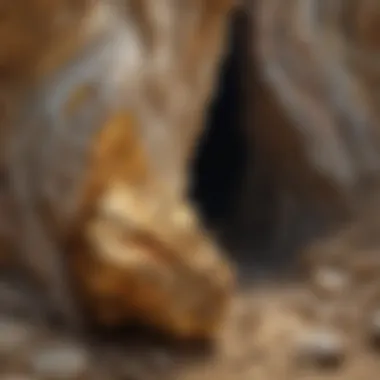
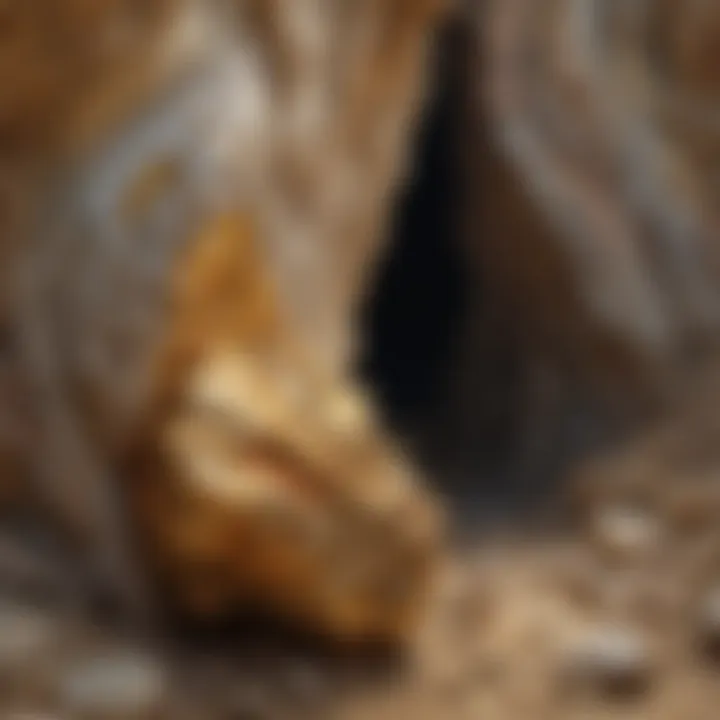
Geological Formations and Their Value
Geological formations constitute an essential facet of the natural world, offering insight into both our planet's history and contemporary life. Each formation, with its unique characteristics, can reveal details about the Earth's past environments, climate changes, and biological evolution. Understanding geological formations helps to grasp the larger narrative of Earth's development over billions of years. Their value extends beyond academic interest; they sustain ecosystems and influence human activities.
Formation Processes
The processes that lead to geological formations are diverse and intricate. They include sedimentation, volcanic activity, metamorphism, and erosion. Sedimentary rocks, for instance, form from the accumulation of sediments. Over time, pressure compacts these materials into solid rock. Volcanic rocks arise from magma that cools and solidifies after erupting at the surface. Each process shapes the landscape in unique ways, creating formations that can be visually striking as well as scientifically valuable.
These processes inform not only our understanding of geology but also environmental science. For example, knowing about erosion can lead to better land management practices.
Geological Heritage and Conservation
Geological heritage refers to the significant natural sites that provide insight into Earth's history and educate future generations. Conservation of these geological treasures is crucial. Many formations face threats from urban development, mining, and climate change. Protecting these sites helps maintain biodiversity and ecological balance. Conservation efforts can also support tourism and education, allowing people to experience and learn from these natural wonders. Through conservation, we acknowledge the stories these formations tell and their importance in the greater narrative of our planet.
Impact on Local Economies
Geological formations impact local economies in several ways. They can attract tourism, which generates revenue for communities. Visitors often seek to explore national parks, geological features, or even participate in geological tours. The presence of valuable minerals or gemstones also leads to economic activity. Mining and resource extraction can provide jobs and stimulate local economies, although they should be balanced with ecological considerations.
In addition to direct economic impacts, geological formations also promote science and education. Museums and universities often focus on local geology, which can enhance educational opportunities for residents and visitors alike.
"Geological formations are not simply remnants of the past, they are crucial to understanding the dynamic nature of our planet today."
Sustainable Collecting Practices
Sustainable collecting practices are crucial for ensuring the longevity and ethical stewardship of natural treasures. As interest in collecting minerals, fossils, and geological specimens increases, it is vital to address how these activities impact the environment and cultural heritage. Sustainable practices not only protect these treasures but also enhance the relationship between collectors and the natural world.
One of the primary benefits of sustainable collecting is the conservation of rare and endangered species. When collectors follow ethical guidelines, they contribute to the preservation of geological and biological diversity. Responsible practices can include collecting only in areas where such activities are allowed and emphasizing the importance of studying specimens without harming their habitats. Collectors can also support conservation initiatives, ensuring that future generations can enjoy these natural wonders.
In addition, sustainable collecting fosters a sense of community among collectors. By exchanging ideas and resources, enthusiasts can promote responsible practices that respect both the environment and local regulations. Educational outreach is another aspect of sustainable collecting. Sharing knowledge about responsible collecting can help new collectors understand the implications of their actions and encourage them to adopt sustainable practices.
Ethical Considerations in Collecting
When discussing ethical considerations in collecting, several key elements come into play. Firstly, collectors should always consider the source of their specimens. Collecting from legally designated areas or private lands with permission is fundamental. Ensuring provenance not only maintains legal standards but also supports ethical sourcing.
Moreover, it's essential to prioritize collecting practices that respect indigenous lands and heritage. Many geological sites hold cultural significance for local communities. Ignoring these aspects can perpetuate cultural disrespect and loss. Collectors should seek to understand the historical context and cultural implications of their activities, fostering engagement rather than exploitation.
"Ethical collecting means thinking beyond just acquisition; it encompasses responsibility toward nature and people."
In addition, collectors must be aware of the long-term impact of their activities. Engaging in irresponsible collecting can lead to irreversible damage to geological sites. It is imperative to balance the pursuit of collection with environmental consciousness. By leading by example, collectors can advocate for responsible engagement.
Legal Frameworks for Collectors
Understanding the legal frameworks that govern collecting is an integral part of sustainable practices. Each country has its own regulations concerning the collection of natural treasures. Collectors must familiarize themselves with these laws to avoid facing penalties and support conservation efforts.
Key legal frameworks often encompass the following aspects:
- Permit Requirements: Certain areas may require permits for collecting. Familiarization with these rules ensures compliance and protects natural resources.
- Protected Species: Many countries have laws against collecting endangered or threatened species. Knowing which materials are protected can help collectors make ethical choices.
- Land Ownership: Understanding land ownership is crucial. Collecting without permission from private landowners is illegal and can lead to serious repercussions.
Additionally, advocating for changes in laws that support sustainability can further enhance responsible collecting. Collectors can participate in policymaking by engaging with local conservation groups, providing insights, and sharing experiences that highlight the value of preserving geological and biological diversity.
By systematically addressing these aspects, sustainable collecting practices become more than a responsibility—they evolve into a culture of respect and appreciation for the natural world.
Community and Collecting
The concept of community in the realm of collecting natural treasures is paramount. Without the ties that bind collectors and enthusiasts together, the passion for rocks, fossils, and minerals might not flourish as it does today. Communities foster a shared interest that enhances individual experiences and offers a wealth of knowledge.
Building a robust network of fellow collectors provides numerous benefits. Collectors can exchange insights about rare finds, learn about proper collecting techniques, and impart wisdom regarding ethical practices. Furthermore, these interactions lead to a sense of belonging. Collectors often share stories about exciting discoveries, while also supporting each other in their ongoing journeys.
Moreover, a vibrant community acts as a vital resource for education. New collectors can find mentorship among seasoned veterans, guiding them in identifying valuable specimens or understanding the geological significance of certain rocks and fossils. Local and online communities both play an important role in education, bridging gaps in knowledge whenever necessary.
"Communities not only enrich our collecting experiences but also amplify our appreciation for the natural world."
Additionally, a collective identity can influence broader socio-economic aspects in regions rich in natural treasures. Communities often come together for conservation efforts or to advocate for responsible collecting practices, which ultimately safeguard these resources for future generations.


Building a Community Around Collectibles
Creating a community around collectibles requires effort and organization. Many collectors begin by connecting through online platforms like Reddit or Facebook, where they share their findings and experiences. These platforms allow for the establishment of community groups specifically tailored to the interests of rock and fossil collectors.
Local clubs and societies also provide an avenue for enthusiasts to meet. Attending casual gatherings or organized meetings allows collectors to exchange knowledge. Some community members may lead workshops on different topics, such as identification techniques or preservation methods. Such communal knowledge sharing is invaluable.
Furthermore, collaboration in pursuit of goals is another significant aspect. Community initiatives can focus on local geology studies, promoting awareness about the importance of sustainability in collecting practices. This creates a purpose-driven environment that can galvanize collectors toward a common cause.
Events and Exhibitions
Events and exhibitions serve as cornerstones of collecting communities. They celebrate shared interests and facilitate face-to-face interactions among enthusiasts. Mineral and fossil shows, for instance, are common venues for collectors to gather, swap treasures, and share insights.
These events are not only venues for buying, selling, and trading but also for education. Various exhibitions feature presentations and lectures that explore the latest findings in geology or paleontology. Such knowledge enhances collections while furthering appreciation for the intricacies of nature.
In addition, events foster collaborations among collectors, scientists, and institutions. Many collectors engage with academic entities, contributing to research projects or volunteering expertise for educational programs. This partnership enriches the community and helps promote responsible practices in collecting.
Finally, exhibitions can significantly elevate local economies. They draw visitors, resulting in increased foot traffic and spending in host communities, benefiting local businesses and creating jobs. Collectors must recognize the ripple effect that their passion can have beyond individual interests.
In summary, community and collecting intertwine to amplify the significance of natural treasures. Active participation not only enhances personal collecting experiences but also contributes to the broader appreciation and conservation of these geological wonders.
The Future of Collecting Natural Treasures
The landscape of collecting natural treasures is evolving rapidly. As technology continues to advance, it shapes not just how we collect, but what we value in our collections. This section aims to outline the significant factors influencing the future of collecting, including technological innovations and shifts in collector priorities. By understanding these dynamics, collectors can better navigate the exciting developments of this growing field.
Technological Advances in Collection
Technological progress is redefining the methods and experiences related to collecting natural treasures. Modern tools and platforms allow collectors to enhance their knowledge and practices in various ways. For example, 3D scanning technology enables the detailed documentation of specimens. This can help in preserving a record of an item without damaging it, ensuring that even rare artifacts can be studied posthumously.
Furthermore, the rise of online marketplaces has opened global opportunities. Websites for buying and selling fossils, minerals, and other collectibles connect enthusiasts like never before. With platforms such as eBay and specialized sites like FossilEra, collectors can reach buyers or sellers from all over the world.
Digital databases also enrich the experience of collectors. Resources like iNaturalist allow users to document and identify specimens. These tools cultivate a community where knowledge is shared and expanded.
Lastly, advances in geology and mineral analysis are enabling collectors to discern authenticity and provenance more accurately. Techniques such as isotope analysis can trace the origin of minerals, adding to their value and helping in making informed purchases.
Shifts in Collector Priorities
Over time, the motivations behind collecting have changed. Today's collectors tend to prioritize sustainability, education, and community. There is an increasing appreciation for ethical sourcing of materials. Collectors actively seek to ensure that their treasures do not contribute to environmental degradation or illegal mining practices. This shift reflects a growing awareness of the responsibility that comes with ownership of natural items.
Moreover, educational pursuits have become prominent. Many collectors now aim to build collections that support scientific research and public knowledge. Collaborations with local universities or museums have emerged, helping to enhance understanding and appreciation of natural history.
Collecting has also transformed into a more community-oriented activity. Dedicated forums and local groups facilitate discussions and share experiences. Events such as rock and mineral fairs not only provide a platform for trading but also serve as a hub for education and networking. These gatherings strengthen bonds between collectors, enriching the overall experience.
"The future of collecting is not just about owning artifacts. It is about understanding their significance and ensuring their legacy.”
In summary, the future of collecting natural treasures is bright, driven by technological advancements and changing priorities among collectors. By adapting to these elements, enthusiasts can ensure they remain engaged with their passions in a meaningful way.
Concluding Thoughts
The exploration of natural treasures holds profound significance that transcends mere aesthetic enjoyment or monetary value. In this article, we have examined various aspects of what constitutes ‘real gold’, encompassing not only gold itself but also the myriad of minerals, fossils, and geological formations that contribute to our understanding of Earth. Each element presents its own unique narrative, which reflects the intricate relationships between nature, culture, and economy.
Reflecting on the Value of Nature
Nature offers an immense array of treasures that are essential for both scientific inquiry and cultural expression. Each mineral or fossil found contributes to a larger narrative about our planet's history, environmental changes, and even human development. The intrinsic value of these natural wonders extends beyond their physical presence; they encapsulate stories of ancient life, geological events, and even climatic shifts that have shaped our world over millions of years.
Collectors often engage with these treasures not just for their rarity or beauty but also for the education and inspiration they provide. By acquiring and studying these items, collectors can reflect on humanity's place in the natural world, fostering a deeper appreciation for biodiversity and the processes that create it. Engaging with this natural history can lead to increased awareness of environmental issues and the need for sustainable practices.
Encouraging Responsible Collecting
As we conclude, it is crucial to emphasize the importance of responsible collecting. Enthusiasts should approach this activity with respect for the environment and the potential impact of their actions. Ethical considerations should guide collectors in obtaining pieces, ensuring that collecting does not lead to the depletion of natural resources or harm endangered species.
To promote responsible collecting, several guidelines should be followed:
- Research the legality of collecting in your area. Certain sites may be protected, requiring permits or prohibiting removal altogether.
- Support sustainable and ethical sourcing. Opt for vendors and organizations that prioritize conservation and the environment.
- Educate others about the significance of preservation. Sharing knowledge empowers others to appreciate the natural world and understand the importance of responsible collecting.
- Embrace conservation initiatives. Participate in efforts that support habitat protection and restoration.
Collecting should not merely be about possession; it should also encompass an understanding of and commitment to the natural world. By adopting responsible practices, collectors play a vital role in fostering a sustainable relationship with nature, ensuring that future generations can also enjoy the richness of Earth’s treasures.
"Collecting gives us the chance to touch history, but it should never come at the cost of our present."
Through reflection and resilience in our practices, we ensure that natural treasures remain available and appreciated as we look to the future.



